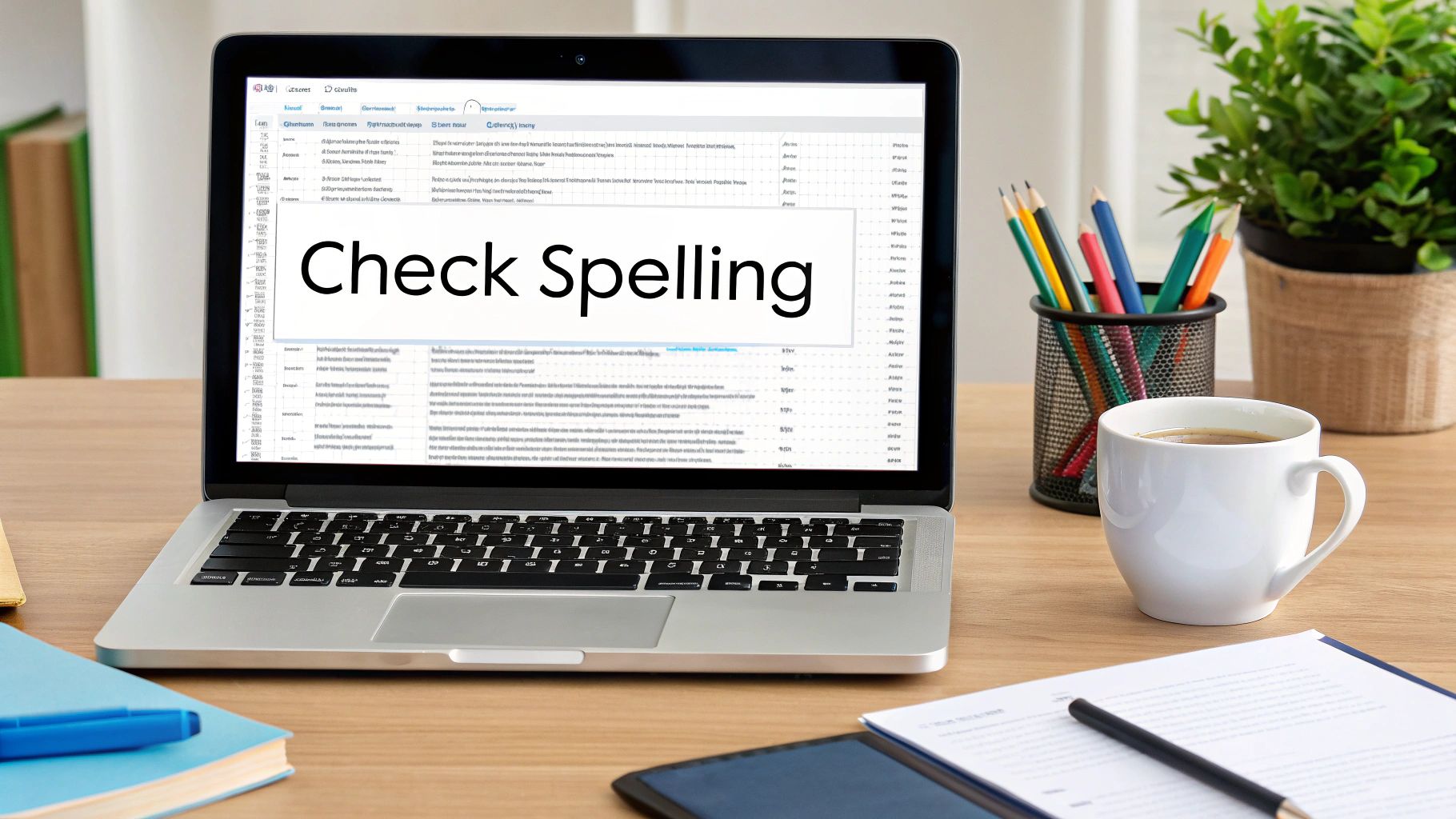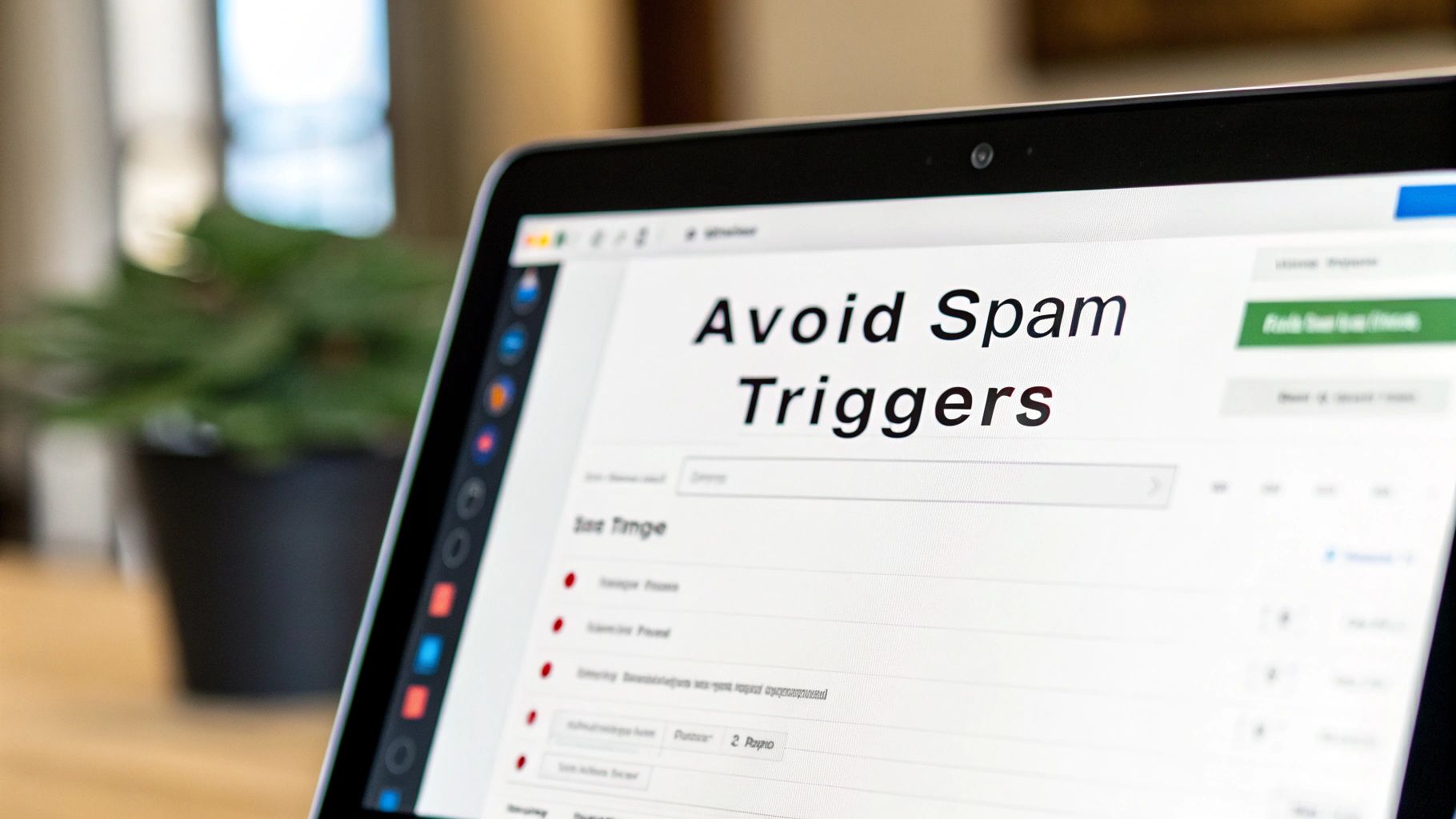Understanding Today's Email Deliverability Landscape
Email deliverability keeps changing. A strategy that worked in 2022 might not get results in 2024. This shift comes from improvements in spam detection and changes in how people interact with emails. To get a good return on your email marketing, you need to do more than just send messages – you need to make sure they actually reach inboxes.
Spam filters are getting smarter each year. Major email providers like Gmail and Outlook regularly update how they spot unwanted emails. Even legitimate marketing messages can get caught if they raise certain flags. Using too many exclamation points, writing in all caps, or adding lots of links can make your emails look suspicious.
User engagement plays a big role in whether your emails make it to inboxes. Email providers watch how people interact with your messages. When subscribers open, click and reply to your emails, it shows providers that your content matters to them. But if people ignore or mark your emails as spam, your sender reputation takes a hit, making it harder to reach inboxes later. That's why keeping an engaged email list is so important.
Current data shows why deliverability matters. In 2024, the average deliverability rate across 15 Email Service Providers is 83.1%. This means about one in six marketing emails never reaches the inbox – 10.5% land in spam folders and 6.4% disappear completely. For more details, check out these email deliverability statistics. These numbers show why following best practices is crucial.
Benchmarking Your Email Program
To get your emails to the right place, start by measuring your results against industry standards. Look at key metrics like open rates, click-through rates, bounces and spam complaints. See how your numbers compare to similar businesses. When you spot areas that need work, you can focus on fixing them. Regular monitoring and adjustments help more of your emails reach inboxes, leading to better engagement and results from your email marketing.
Building a Strong Sender Reputation That Lasts
Think of your sender reputation as your email program's credit score. When you have a good reputation, your emails are more likely to reach inboxes. A poor reputation, however, often means your messages get filtered straight to spam. That's why understanding how to build and maintain a strong sender reputation is essential for better email deliverability.
Authentication: Your Digital ID
The first step in building trust with email providers is proper authentication. This works like showing your ID – it proves you are who you say you are. Two key protocols help with this:
- SPF (Sender Policy Framework)
- DKIM (DomainKeys Identified Mail)
These protocols protect your brand from email spoofing and show email providers that your messages are legitimate. Email providers give priority to senders who use proper authentication.
Sending Patterns Matter
Just as steady bill payments help your credit score, consistent email sending helps your reputation. Avoid sudden jumps in volume – they can trigger spam filters. For example, if you normally send 1,000 emails weekly, jumping to 10,000 in one day raises red flags. Stick to a predictable schedule that email providers recognize as normal behavior.
Keep Your Email List Clean
List hygiene directly impacts your sender reputation. Remove inactive and unengaged subscribers regularly. When your list has too many bounces or spam complaints, email providers see it as a sign of poor list management. Think of it like maintaining a garden – without regular care, problems start growing. Want to learn more? Check out our guide on mastering email list management.
Watch Your Reputation Score
Track your sender reputation like you'd monitor your credit report. Use reputation monitoring tools to catch potential issues early. This lets you fix problems before they seriously impact your deliverability. Regular monitoring helps maintain healthy delivery rates and ensures your messages reach their intended recipients.
Privacy Changes and Email Technical Requirements
Email marketing continues to change as new privacy rules and mailbox provider requirements reshape how we measure success and improve email deliverability. These shifts aren't optional – they're essential to follow.
Understanding Modern Privacy Standards
Users care more about their data privacy than ever before. Laws like GDPR and CCPA now control how companies collect and use personal information. Email marketers must get clear permission and give subscribers easy ways to manage their preferences. Being open builds trust and keeps subscribers engaged.
Mailbox providers are also stepping up privacy protections. Apple's Mail Privacy Protection now hides open rates, making it harder to track engagement. This fundamentally changes how we need to measure email performance.
Recent data shows MPP's real impact – Apple users now see only 66.3% of emails land in their inbox, while 22.9% go to spam. This highlights why marketers must focus on other metrics like clicks instead of opens.
Email Authentication Best Practices
Strong authentication is vital for meeting technical requirements. Three key protocols are now essential:
- SPF – Verifies sending servers are authorized
- DKIM – Validates email hasn't been tampered with
- DMARC – Protects against email spoofing and fraud
These standards prove you're a legitimate sender, guard against attacks, and boost your reputation with mailbox providers. Together, they help more of your emails reach the inbox.
Building a Future-Ready Email Program
Adapting to current changes is just the start. Success requires building flexibility into your email program through:
- First-Party Data Focus: Collect data directly through engaging content and preference centers
- Better Engagement Tracking: Look at clicks, conversions and site activity, not just opens
- Ongoing Education: Study industry updates and provider policies to stay ahead of changes
Taking a proactive approach to privacy and technical standards strengthens your sender reputation. This helps maintain effective email delivery even as requirements continue to evolve.
Mastering List Hygiene and Engagement Strategies
A healthy email list isn't just about having lots of subscribers – it's about having quality contacts who want to hear from you. Poor list maintenance directly impacts whether your emails make it to inboxes. When your list hygiene slips, you miss opportunities to connect with customers and waste resources on undelivered messages.
Identifying and Removing Risky Subscribers
Start by finding and removing subscribers who could hurt your sender reputation. This includes people who never open emails, invalid addresses, and spam traps. Email providers track engagement rates – when a large portion of your list ignores messages, they may flag your content as spam.
Bad addresses that bounce back tell providers you aren't managing your list well. Even worse are spam traps – fake addresses designed to catch senders who don't follow best practices. Hit one of these and your deliverability can tank overnight.
Re-engagement Campaigns: A Second Chance
Before deleting inactive subscribers, try winning them back with a re-engagement campaign. Send them special offers, valuable content, or ask them to update their preferences. This approach helps retain subscribers who still want your emails while showing providers you care about list quality.
Maintaining Data Quality Throughout the Subscriber Lifecycle
Good data practices are key for long-term success. Use double opt-in to verify new subscribers actually want your emails. Regularly clean bounced addresses and honor unsubscribe requests right away. Taking these steps keeps your list healthy and your sender score high. Want more email tips? Check out our email strategy guide.
Give subscribers control through a clear preference center where they can choose what types of emails to receive and how often. This builds trust and helps you segment based on real interests. When you focus on engagement and list quality, you'll see better inbox placement and stronger results from your email marketing.
Creating Content That Drives Meaningful Engagement
High-quality content is crucial for successful email marketing. Your emails must connect with readers and inspire them to take action, which directly impacts deliverability success.
Crafting Compelling Subject Lines
The subject line determines whether subscribers open your email. Keep it brief and interesting while accurately reflecting what's inside. Skip misleading text, excessive punctuation, and all caps that can trigger spam filters. Instead, use subscriber data for personalization and run A/B tests to find what gets the best response.
Personalization That Resonates
True personalization goes beyond just adding names. Study subscriber behavior and interests to deliver content they actually want. For example, if someone regularly clicks on product links in a specific category, feature similar items and related deals in future emails. This focused approach improves engagement and reduces spam complaints.
Delivering Value With Every Message
Each email should give subscribers something worthwhile. Ask yourself:
- What problem does this solve?
- What useful information does it share?
- What exclusive benefit does it provide?
Whether you're sharing expert tips, special deals, or insider content, make sure every message adds real value that keeps subscribers looking forward to hearing from you.
Segmenting Your Audience for Targeted Messaging
Break down your email list into specific groups based on:
- Demographics
- Purchase history
- Engagement levels
- Customer status (new vs loyal)
This allows you to create highly targeted campaigns. For example, new subscribers should get different content than long-time customers. Focused messaging builds stronger relationships and reduces spam complaints.
Testing and Optimizing for Continuous Improvement
Regular testing and refinement keeps your content effective. Track key metrics like:
- Open rates
- Click-through rates
- Conversion rates
Test different:
- Content formats
- Calls to action
- Send times
Analyze what works best with your audience. Use those insights to improve future emails, strengthen your sender reputation, and maintain high deliverability rates.
Monitoring and Optimizing Deliverability Performance
Successfully managing email deliverability requires continuous attention and swift responses to problems. This section covers the key tools and practices that experts use to measure performance, spot issues early, and steadily improve results.
Building an Effective Monitoring System
Just as a doctor tracks vital signs, you need to regularly check your email program's health. Focus on these essential metrics:
- Inbox Placement Rate: What percentage of your emails reach the inbox – your most important indicator of success
- Spam Placement Rate: How many emails get flagged as spam – a critical warning sign when this increases
- Bounce Rate: The portion of emails that fail to deliver – sustained high rates point to list quality issues
- Spam Complaints: Recipients marking you as spam – even small numbers can hurt your reputation
These numbers give you a clear view of how well your email program is performing. For more guidance on list management, check out this helpful resource on email list best practices. Regular monitoring lets you catch and fix problems before they get worse.
Interpreting Deliverability Signals
The data only helps if you understand what it means. For example, if your inbox placement suddenly drops, consider these potential causes:
- List Quality Issues: Rising bounces or complaints mean it's time to clean your subscriber list
- Content Problems: More spam placement suggests checking for common triggers like excessive punctuation
- Technical Issues: A bounce rate spike could indicate server or authentication configuration problems
Analyzing these indicators helps pinpoint the root cause so you can implement the right solution. This preventive approach keeps your email program running smoothly.
Developing Action Plans for Common Challenges
While deliverability problems will occur, having response plans makes them easier to handle. Here's how to address typical issues:
- High Bounce Rate: Set up regular list cleaning to remove invalid and inactive addresses. This protects your sender reputation.
- Increasing Spam Complaints: Check your content and ensure subscribers have clear preference controls. Focus on providing value.
- Low Inbox Placement Rate: Verify your authentication setup (SPF, DKIM, DMARC) is correct to build mailbox provider trust.
Taking quick action on these challenges helps maintain strong deliverability and keeps your messages reaching subscribers' inboxes.
Improve your email outreach success and validate up to 40% more leads with EmailAddress.ai's advanced verification service. Start verifying your emails today!





